Alexander’s expeditions
by
Abraham Ortelius
Detail
Date of first edition: 1595 (Additamentum)
Date of this map: 1624 (Parergon)
Dimensions (not including margins): 36 x 47 cm
Dimensions (including margins): 47 x 60,2 cm
Condition: very good. Sharp copper engraving printed on strong paper. Centre fold is as published. Old coloured. Wide margins. Age-toning t verso.
Condition rating: A
Verso: text in Latin
Map reference: Van der Krogt 3,8030H:31; Van den Broecke 222.
From: first published in Additamentum to the Theatrum Orbis Terrarum in 1579, this edition In Parergon 1624. Editor-Printer: B. Moretus. Van der Krogt 3, 31:711.
Unless otherwise specifically stated on this map page, we charge the following expedition costs in euro (unfortunatelly, gone up with Covid, but still too low in reality!):
– Benelux: 40 euro
– Rest of Europe: 60 euro
– Rest of the World: 100 euro
This item is sold
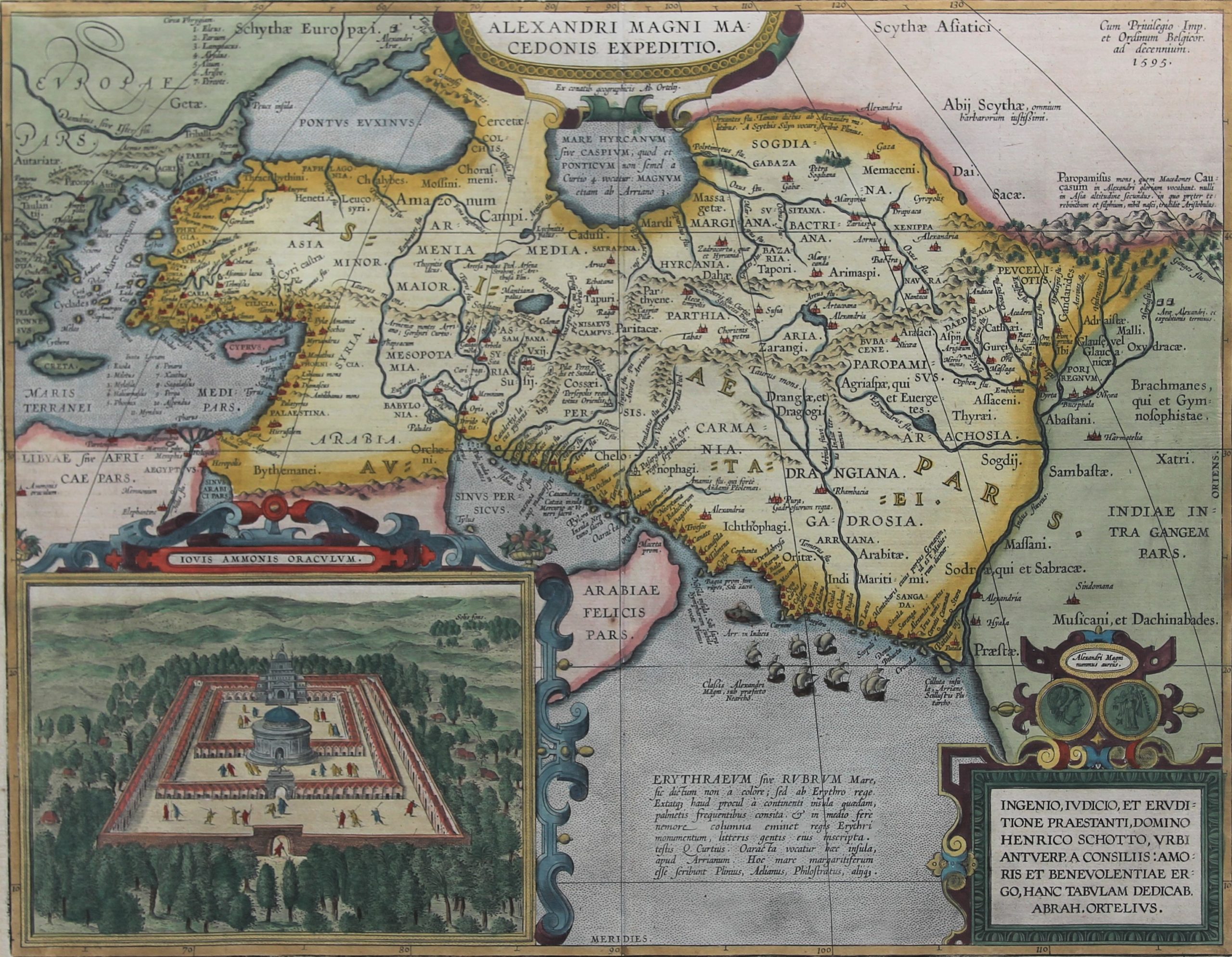
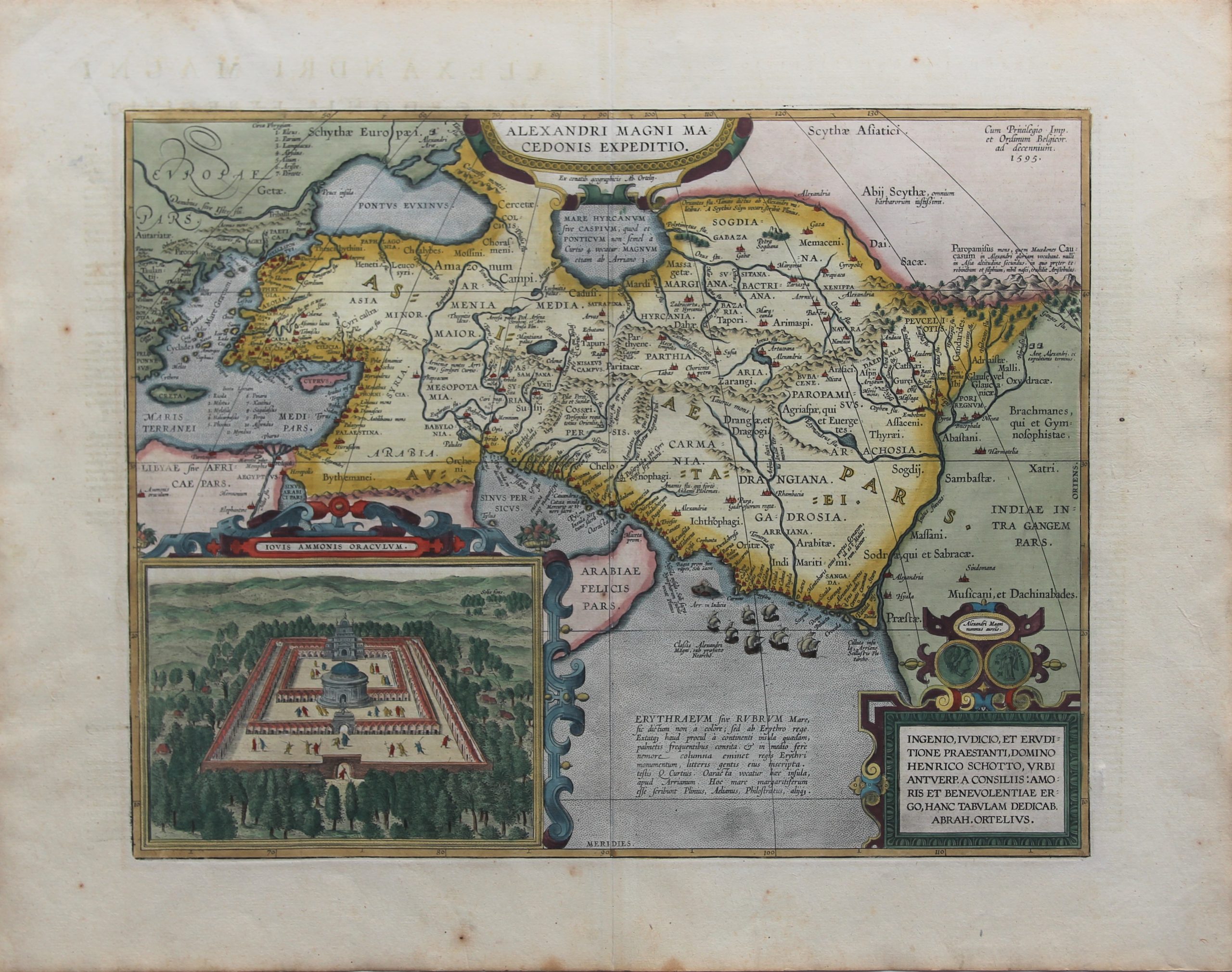
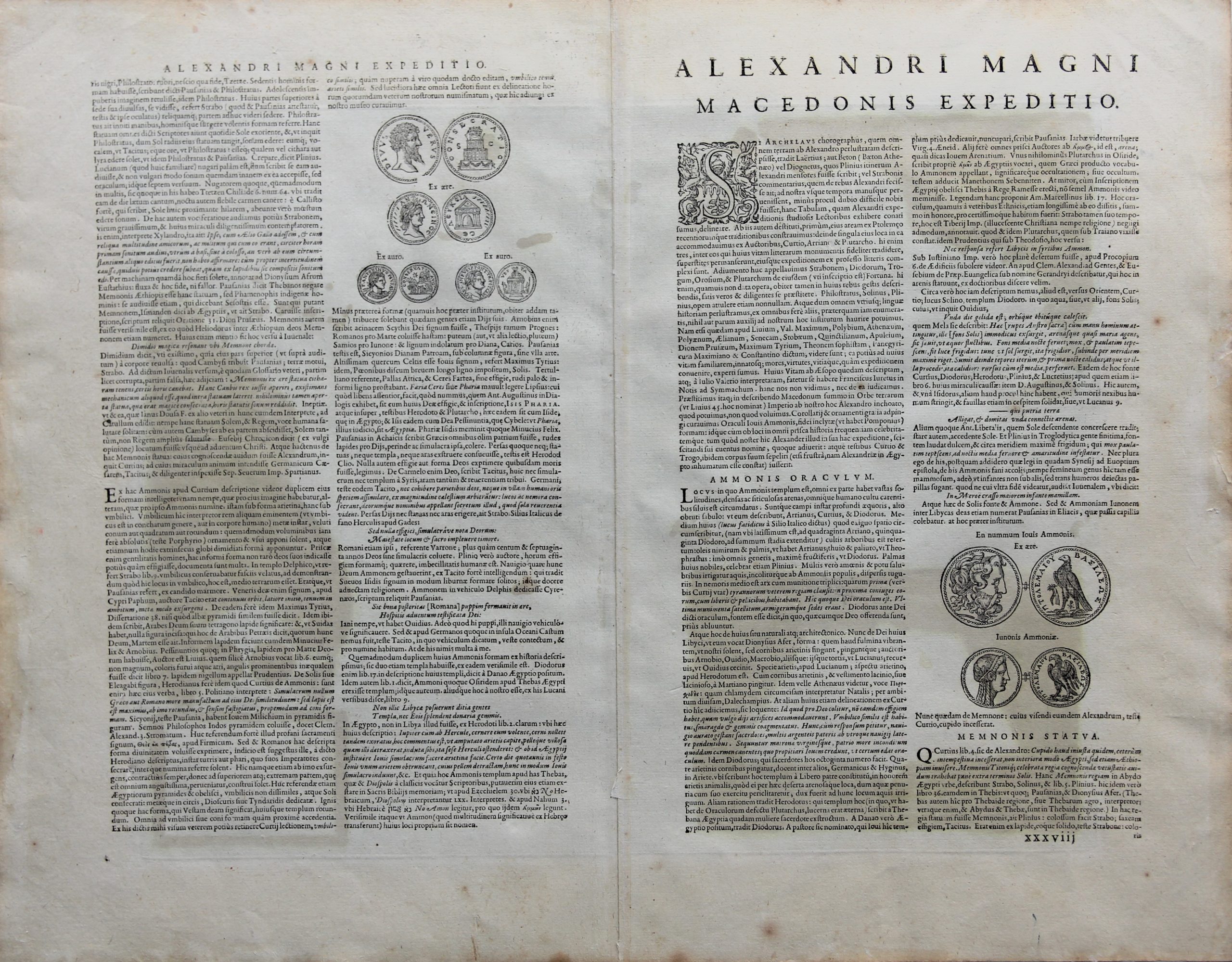
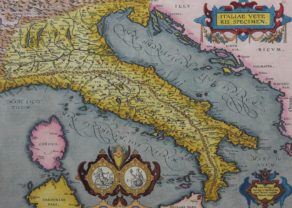
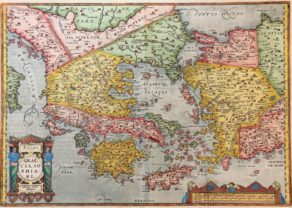

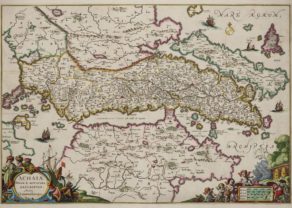
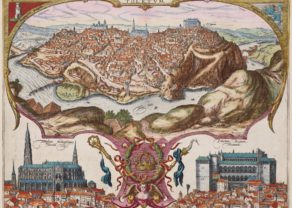
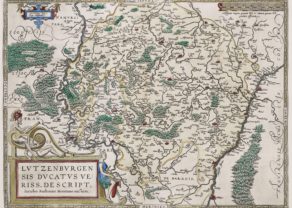
Alexander the Great
A great empire, short lived, but with a long-lasting influence
Ortelius based himself on classic authors like Pliny, Plutarch and Livy to produce this map of the Empire of Alexander the Great. Alexander succeeded to his father in 336 BC. The eastern border of that empire was formed by the Indus with its tributaries and the realm was surrounded in the northeast the Pamir Mountains. Once Alexander had arrived at the delta of the River Indus, he split his army in two units to return home. He would come back over land, while Nearchus would command a fleet (shown in the Arabian Sea).
The inset illustrates the Oracle of the Egyptian Supreme God, Amun (see picture), located in the oasis of Siwa in Western Egypt. On the map the oasis can be seen at the very left (in the pink area). Alexander worshiped Amun. He even considered himself to be the Supreme God’s son. Here in 331 BC after his conquest of Egypt, he asked for the Oracle’s divine approval for his planned conquest of the East. He also expressed his wish to be buried on this site, but that eventually happened in Alexandria. Legend has it that the Oracle replied: “If the East conquered, will be a great King die”. Alexander saw this as a positive message and thought it had to mean Darius III (is not Darius I or Darius the Great), the then ruler of Persia (see picture of famous mosaics of their battle (in Erbil, Iraq) with Alexander left and the fleeing Darius III right). Eventually Alexander himself would die! The mosaics originating from Pompeii can be seen at the archaeological museum in Naples.
The worship of Amun enjoyed great popularity. A bust of this god was even found near Bonn.
The map also shows the towns of Susa, Persepolis and Babylon, where Alexander would die on 10/11 June 323 BC on its retreat.
As for the oasis of Siwa: this was the HQ of the British Army’s Long Range Desert Group in WW II. It was a heavily fought area: Rommel’s Africa Corps conquered this site three times.
Original title: Alexandrii Magni Macedonis Expedio